Attractions Nearby Cusco, Day Trips and Excursions
(Cusco / Cuzco, Peru)
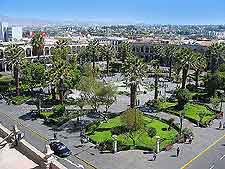
Lying in the centre of southern
Peru and next to the Sacred Valley, Cusco is fortunate to be surrounded by attractions in all directions. For many, Cusco is the ideal base for exploration of
Machu Picchu, and since this Lost City of the Inca Empire is simply so close and its attractions so spectacular, it really is a must see.
Juliaca can be found to the south of Cusco, next to Puno and is a good base for those planning a visit to
Lake Titicaca. Other popular excursions include the attractions of
Arequipa,
Ayacucho, Chinchero, Moray, Ollantaytambo, Pisac and Salinas, amongst many, many others.
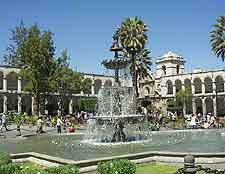
Arequipa
Arequipa stands to the south of Cusco, where it has been shaped over the years by a series of earthquakes and volcanic activity. This is actually the second-biggest city in Peru, following
Lima, and is often referred to as the 'White City', since many of its
attractions have been built from a whitish volcanic rock. Much of the Arequipa area is dominated by the
El Misti, which experienced visitors regularly come to climb.
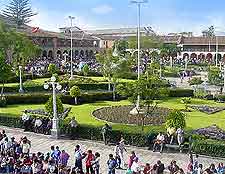
Ayacucho
Many tourists rate Ayacucho as being Peru's most alluring city, after only Cusco. Ayacucho is sited to the west and known for its plentiful
colonial buildings, historical churches, Easter
Semana Santa celebrations, and museums. The main attractions in Ayacucho tend to be located around the central Plaza de Armas, such as the
Museo Arte Popular, an acclaimed gallery exhibiting tapestries, wood carvings and various art works.
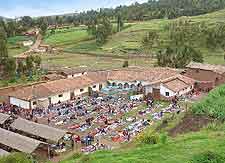
Chinchero
Described by the Incas as being the 'birthplace of the rainbow', the Andean village of Chinchero enjoys a very special and beautiful setting. However, since Chinchero is around 400 metres / 1,310 feet higher than Cusco, visitors should take the time to become properly acclimatised to this change in altitude, so that the awesome mountain vistas can be properly appreciated. If you are here on a Sunday, the bustling market is especially lively.
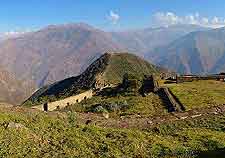
Choquequirau / Choquekirao
The Inca site of Choquequirau has only been discovered in recent years and stands at the very top of a mountain ridge, above a deep river canyon, and is actually only accessible on foot. Reaching Choquequirau is an enjoyable trek and most visitors start hiking from Cachora, a small village next to Abancay, near to the ruins of Saihuite.
Open hours: daily
Admission: free
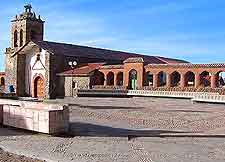
Juliaca
A busy city complete with its very own airport, Juliaca's attractions are fairly limited in supply and generally based around the centrally located
Plaza Melgar and Plaza Bolognesi public squares, the latter of which is where you will find both the Iglesia La Merced and the Iglesia Santa Catalina churches. Many intriguing and friendly Peruvian villages surround Juliaca and warrant investigation.
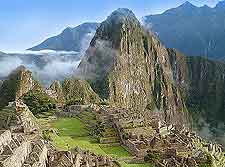
Machu Picchu
Machu Picchu is one of the main reasons that Cusco is so popular, since people come from all over the world to marvel at this ancient archaeological site, often first walking along the
Inca Trail. If possible, try to arrive at Machu Picchu first thing in the morning, at sunrise, when the ruins are especially impressive and relatively quiet. Alternatively, wait until later in the afternoon, when the crowds will begin to abate.
Open hours: daily - dawn to dusk
Admission: charge, discount available to students and children, children eight years old and under are free, limited visitor numbers to 2,500 per day, 5-days minimum advanced booking is recommended
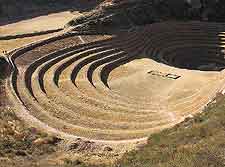
Moray
Sited some 10 km / 6 miles to the east of the Urubamba, Moray offers quite a sight, appearing rather like an enormous bowl in the ground. The steep sides of this structure appear rather like an amphitheatre, being terraced and once used by the Incas to grow a variety of crops, with each terrace offering different climatic conditions. Other attractions include a smaller, secondary 'bowl' and great views. Although Moray is a little off the beaten path, it really is very easy to reach and a worthy day trip.
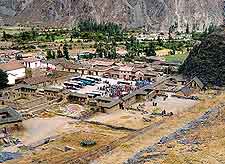
Ollantaytambo
Ollantaytambo boasts a rich Inca heritage and this charming village is amongst the very best examples showcasing the meticulous way that the Incas once planned cities. Presided over by a very imposing and eye-catching Inca fortress, Ollantaytambo lies directly to the north-west of Cusco and is regularly frequented by visiting tour buses headed for the railway station, where trains regularly arrive and depart for Machu Picchu's neighbouring town of Aguas Calientes.
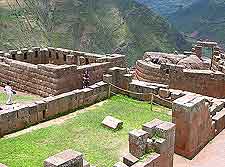
Pisac
The archaeological ruins of Pisac originate from Inca times and include a very impressive hilltop Citadel, which overlooks the village from high above and can be reached along a winding trail in around two hours. Pisac is also home to sweeping agricultural terraces, views of the Rio Kitamayo Gorge and the Rio Chongo Valley, and an Inca ceremonial centre, where the Intihuatana (Sun Temple / Hitching Post of the Sun) is located.
Salinas
Close to the
Sacred Valley and to the north-west of Cusco, is the small village of Tarabamba. From here, rover over the Urubamba River and head in the southerly direction, until you reach the famous salt pan attractions of Salinas. This is a relatively short hike uphill, but worth any effort, since the sight is certainly one to remember. These salt pans number in the thousands and were once used by the Incas as a reliable source of salt.
 Lying in the centre of southern Peru and next to the Sacred Valley, Cusco is fortunate to be surrounded by attractions in all directions. For many, Cusco is the ideal base for exploration of Machu Picchu, and since this Lost City of the Inca Empire is simply so close and its attractions so spectacular, it really is a must see.
Lying in the centre of southern Peru and next to the Sacred Valley, Cusco is fortunate to be surrounded by attractions in all directions. For many, Cusco is the ideal base for exploration of Machu Picchu, and since this Lost City of the Inca Empire is simply so close and its attractions so spectacular, it really is a must see.







